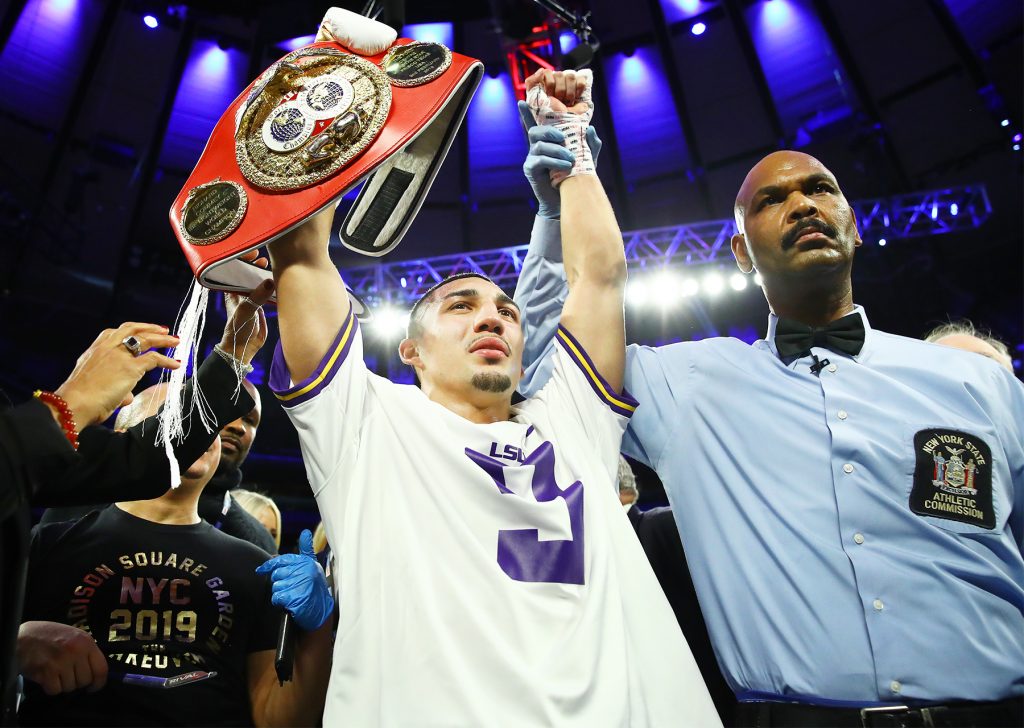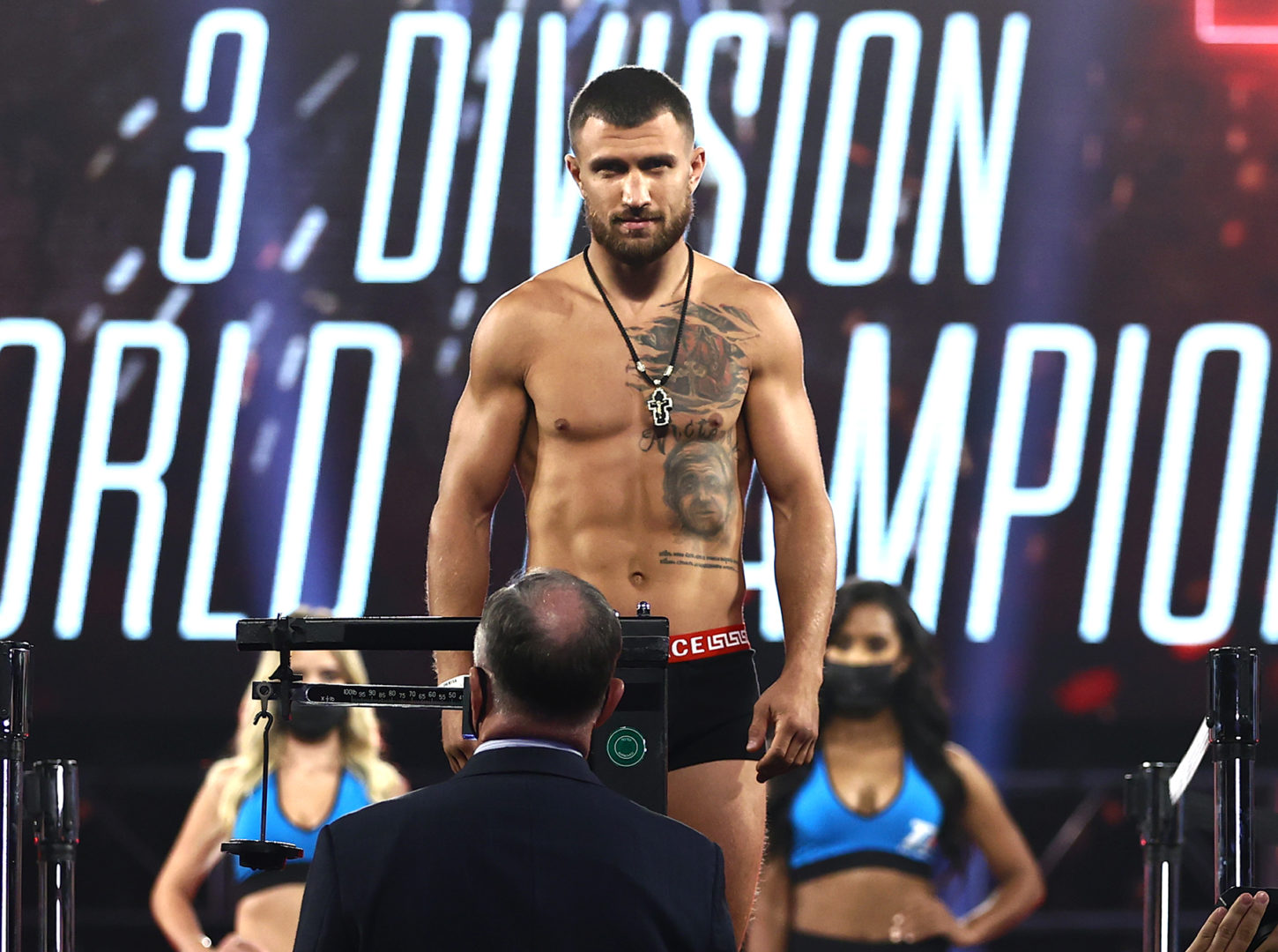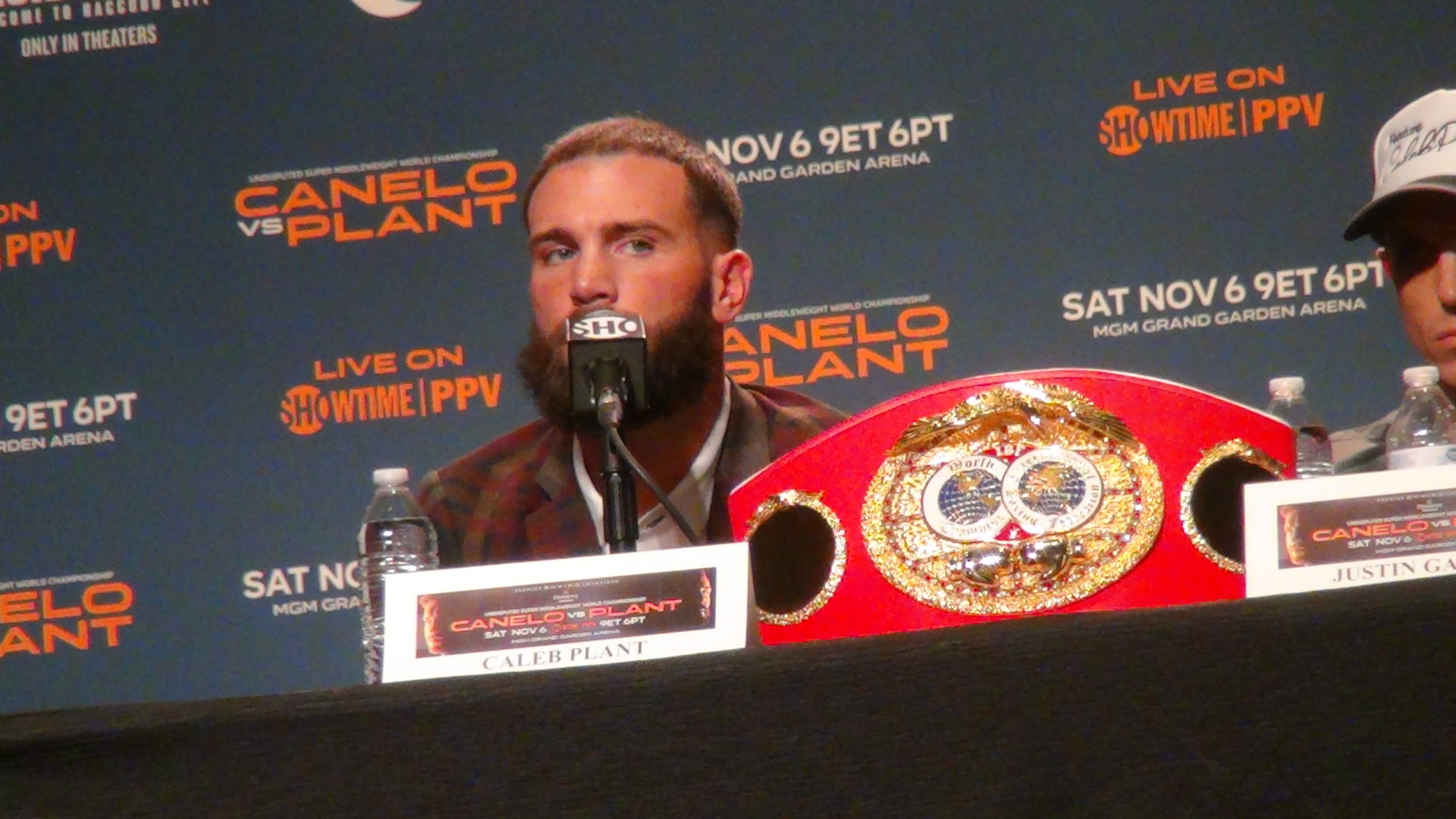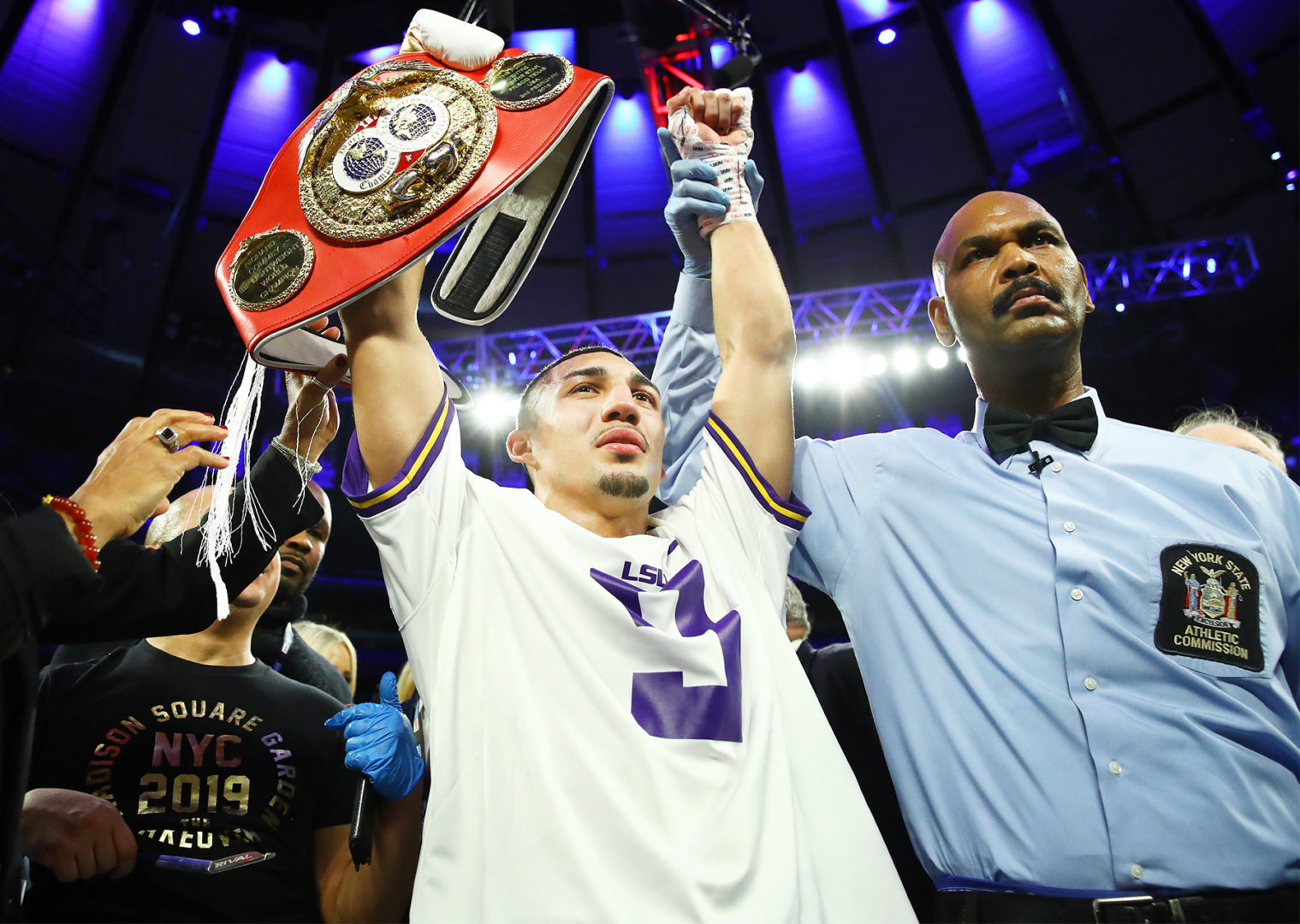
By Norm Frauenheim–
There wasn’t a knockout. There wasn’t even a knockdown. The classic expected in this corner and few others did not happen. But Teofimo Lopez-Vasiliy Lomachenko was a winner for the audience it attracted and interest it continues to generate.
Boxing, forever pushed to the edge of an imagined grave by critics and abolitionists, is alive and well. Not even a pandemic can kill it.
The numbers and noise are proof. First, the numbers. Ratings for the ESPN telecast were at a three-year high for boxing. Viewership for Lopez’ upset of Lomachenko averaged 2.729 million. The audience peaked at 2.898 million. Two-million was the reported goal. But who knew? In effect, the lightweight bout was a check-up, a moment to take a long look at what has happened since COVID crashed the party.
Turns out, the patient has a heartbeat.
Post-fight, I got a call from a friend, who is as spot-on insightful as he is fearless in what he thinks about an ever-scarred game. The best thing about the fight, he said, was that it wasn’t on pay-per-view. True, true and true on so many levels.
The decision not to attach a PPV tag onto the bout was the right thing to do. It’s hard enough to pay for groceries these days. But it was also the wise thing to do. If it had been PPV, maybe the audience would have been about 100,000. Fighters, managers, promoter and network would have split meager receipts, moved on and muddled on, still clueless about the state of the game.
Now, they know there’s still a market, an audience still hungry for the right fight. With its mind-numbing preponderance of titles, acronyms and the usual cast of suspects, boxing will never be exactly healthy. That’s part of the charm. But never doubt its resiliency. Lopez-Lomachenko showed it’s still there, vibrant as ever.
In part, the public appetite for a great fight created expectations. What happened in Lopez’ unanimous decision over Lomachenko, however, won’t ever be compared to Diego Corrales’ 2005 stoppage of Jose Luis Castillo or Robert Duran’s lightweight reign. It wasn’t even a Fight of the Year.
But nothing about it diminished that appetite for more. Nearly a week after the bout, people are still talking about the 119-109 scorecard (Really?), Lopez’ arrival (A Star Is Born), Lomachenko’s slow start (Why?) and news of Lomachenko’s subsequent shoulder surgery (That’s why).
A lot of the talk is familiar, including an argument that Lomachenko’s surgery is only an excuse. If it was really an excuse, you’d think he would have mentioned it in post-fight interviews. He didn’t. His injured right shoulder is simply the result of fighting above his natural weight. Lomachenko, a true featherweight, began to suffer injuries when he moved to 135 pounds. He first injured his right shoulder in 2018 when he won a lightweight title against Jorge Linares.
Guess here: Lopez knew that Lomachenko was vulnerable at any weight above 130. For two years, he lobbied for the fight. Then, Lopez, a lightweight about to move up to 140, looked like the bigger fighter in a dominant 12th round, a convincing finale to what had been a close bout.
Lopez won the argument. Won the future, too, with a big audience that is still talking.






















